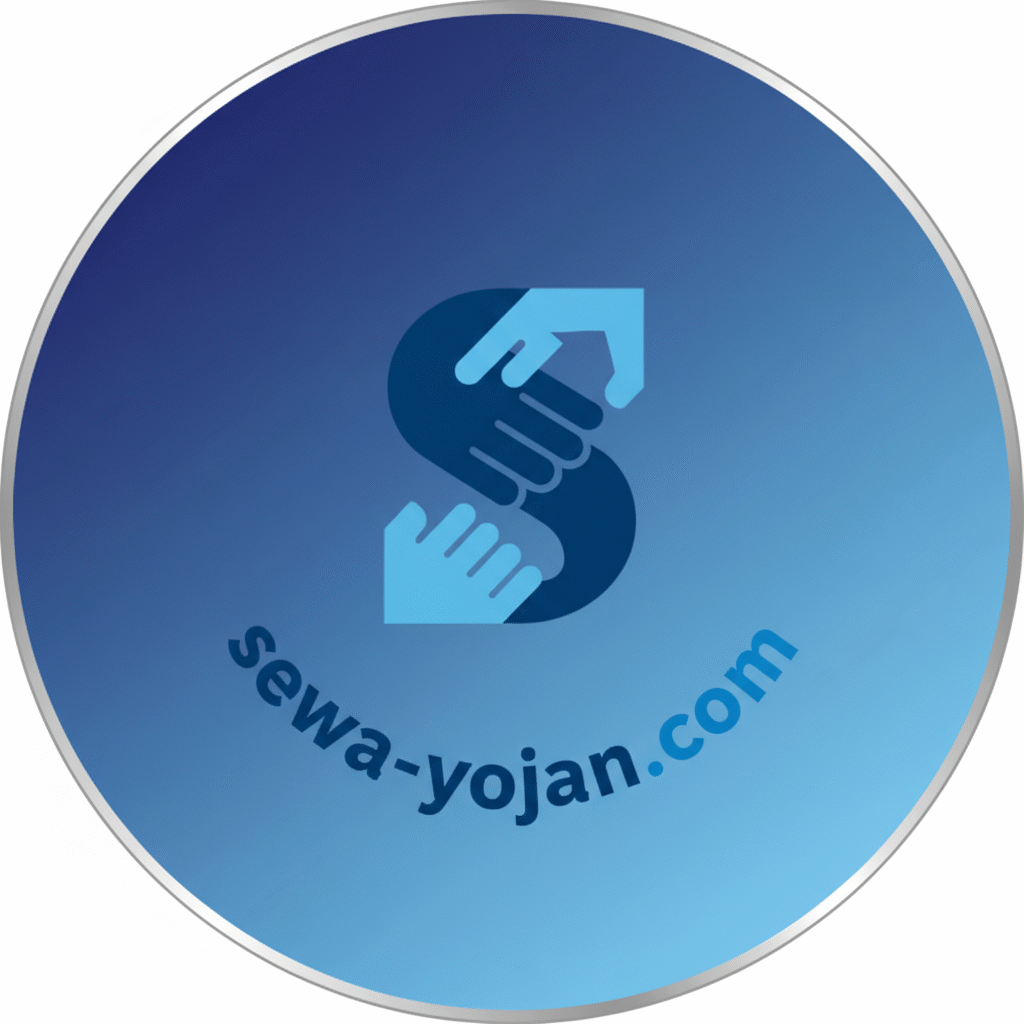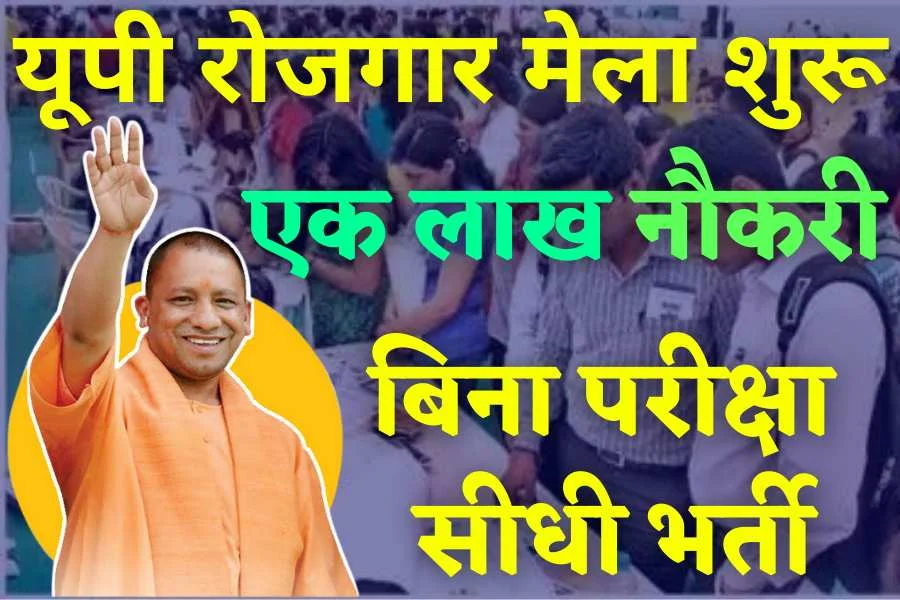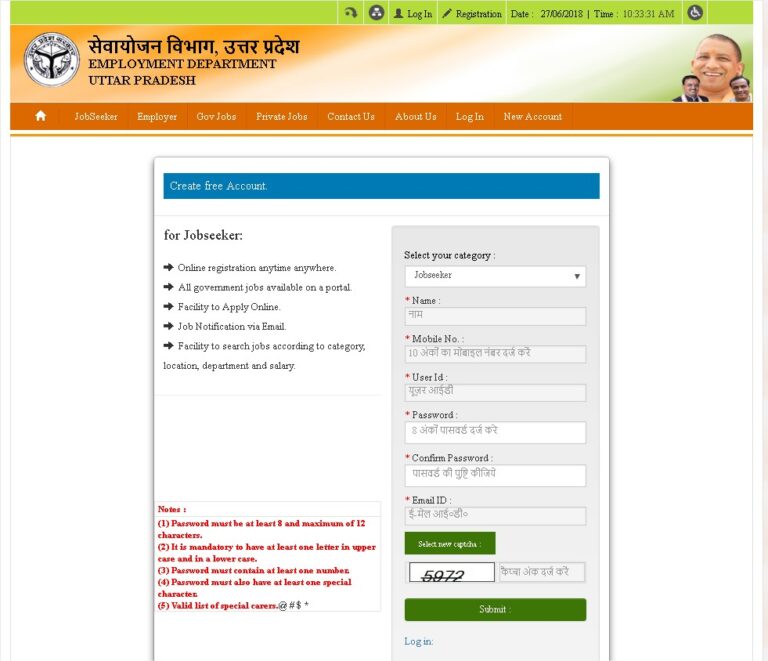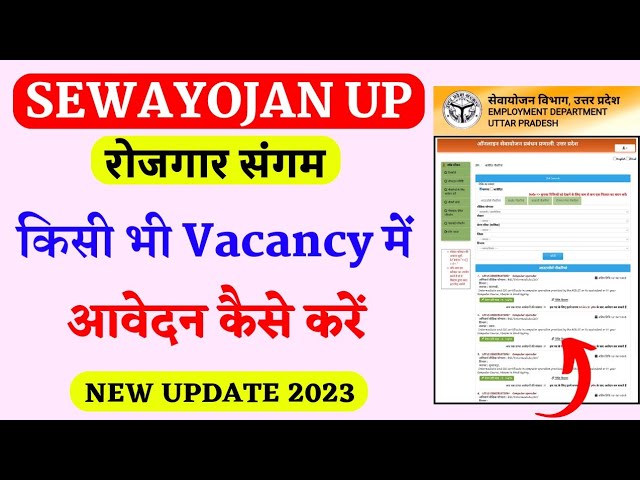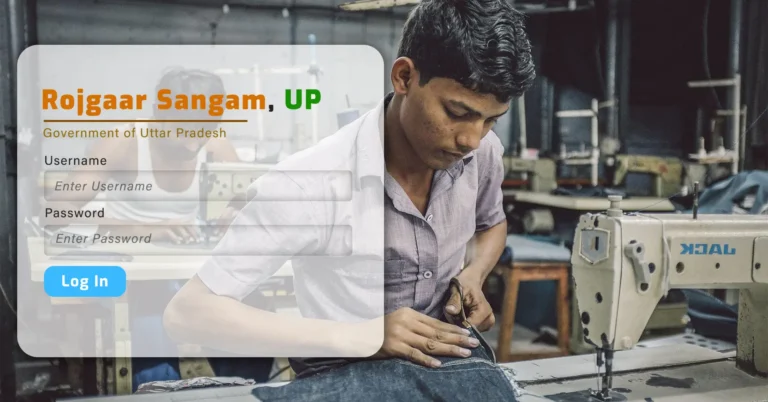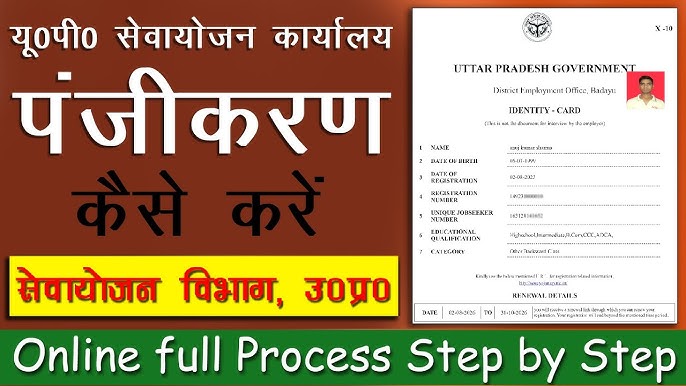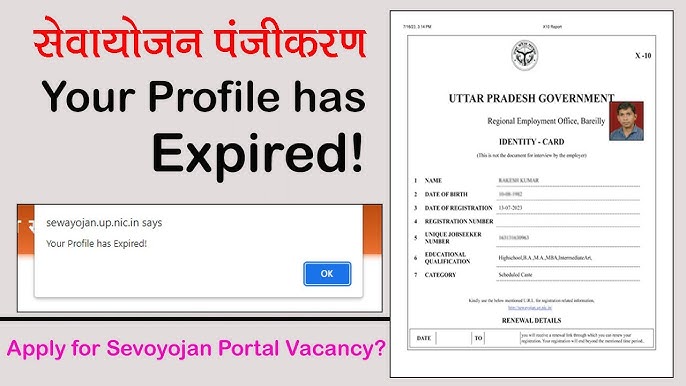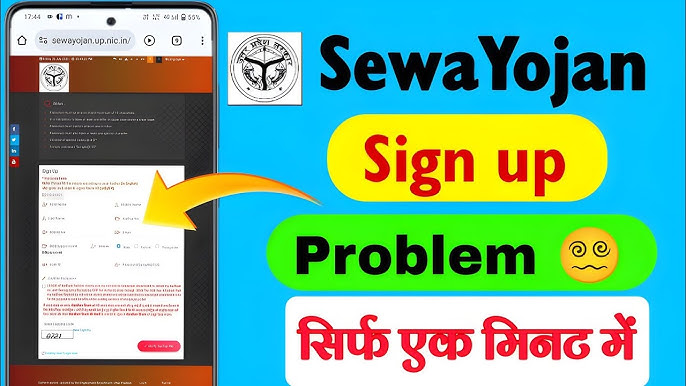Sewayojan.up.nic.in Rojgar Mela 2021: A Comprehensive Review of Objectives, Impact and Future Prospects
The Sewayojan.up.nic.in Rojgar Mela 2021 represented a landmark effort by the Government of Uttar Pradesh to bridge the gap between job seekers and employers in a state with diverse socio-economic challenges. Launched as part of a broader employment mission, the sewayojan.up.nic.in rojgar mela 2021 combined technology, targeted outreach, and on-ground mobilization to create visible employment opportunities for youth, women, and marginalized communities. This article offers an exhaustive, SEO-focused review of the initiative—covering its history, objectives, implementation strategies, measurable state-level impact, personal and community success stories, operational challenges, comparisons with other schemes, and realistic future prospects. Throughout this long-form analysis the primary keyword sewayojan.up.nic.in rojgar mela 2021 is woven naturally to support discoverability while preserving reader experience and authority.

Background and Historical Context
The unemployment landscape in Uttar Pradesh before 2021 was influenced by rapid population growth, a largely agrarian economy undergoing structural change, and mismatches between available skills and market demands. Against this backdrop, the sewayojan.up.nic.in rojgar mela 2021 was conceived to accelerate formal employment linkages, promote dignity of work, and reduce dependence on seasonal and informal labor. Official portals, including sewayojan.up.nic.in, were leveraged to centralize job listings, register candidates, and coordinate employer participation—making the sewayojan.up.nic.in rojgar mela 2021 both a digital and physical intervention.
Historically, rojgar melas in India have been periodic events where employers, training providers, and job seekers meet face-to-face. The 2021 iteration organized through sewayojan.up.nic.in expanded this concept by integrating pre-event digital registration, sector-specific stalls, and on-the-spot interviews. That combination of digital reach and in-person engagement suited a year where the pandemic necessitated both online systems and socially responsible, staggered physical interactions, making the sewayojan.up.nic.in rojgar mela 2021 a timely policy instrument.
Objectives of the Sewayojan.up.nic.in Rojgar Mela 2021
The sewayojan.up.nic.in rojgar mela 2021 was designed with several clear and measurable objectives:
-
Create immediate placement opportunities for unemployed youth across urban and rural districts through a coordinated mela (employment fair) model.
-
Strengthen linkages between local employers (micro, small, medium enterprises) and job seekers using the central portal sewayojan.up.nic.in for registration and follow-up.
-
Promote women’s participation in the workforce through special outreach drives and reserved slots at melas.
-
Integrate skill-building and certification through partnerships with training centers so candidates could be placed in skilled and semi-skilled roles.
-
Monitor and evaluate placement outcomes to guide future policy and scale best practices from successful districts to the rest of the state.
Each objective fed into a broader policy framework aiming at inclusive growth, state-wise parity in job access, and sustained rural development. The explicit use of sewayojan.up.nic.in in publicity, registration, and tracking gave the rojgar mela 2021 a measurable and auditable dimension.
Implementation Strategy: Digital Meets Physical
Successful public employment drives require careful planning and execution. The implementation of the sewayojan.up.nic.in rojgar mela 2021 employed a three-pronged strategy: centralized digital registration, district-level coordination, and employer engagement.
Centralized digital registration on sewayojan.up.nic.in provided the backbone. Job seekers could upload résumés, select job categories, and schedule interviews. This pre-registration reduced on-site handling time and allowed organizing teams to curate employer-student matches. Employers listed vacancies, eligibility criteria, and salary ranges on the same portal—so sewayojan.up.nic.in served as both marketplace and database.
District-level teams translated digital interest into physical events. Each mela was organized in district education centers, polytechnic campuses, or community halls where employer stalls were organized by sector—manufacturing, healthcare, retail, IT-enabled services, construction, and hospitality. Special sessions focused on women empowerment schemes and rural livelihood opportunities to ensure balanced participation.
Employer engagement was critical. The sewayojan.up.nic.in rojgar mela 2021 sought participation from public and private employers, ensuring roles ranged from entry-level positions to supervisory posts. Recruiters were encouraged to conduct on-the-spot interviews, make provisional offers, or schedule follow-ups. Training partners were present to provide quick assessments and recommend immediate skilling modules where required.
Target Groups and Inclusivity Measures
Inclusivity was central to the sewayojan.up.nic.in rojgar mela 2021. While urban youth and graduates were targeted for white-collar and formal sector roles, specific measures ensured representation for rural job seekers, women, persons with disabilities, and marginalized castes.
Women’s participation was boosted through dedicated booths highlighting women-friendly employers, on-site childcare facilities at larger melas, and reserved interview slots. Rural development objectives were reflected in targeted drives for agricultural graduates, artisans, and small-scale entrepreneurs, linking them with agro-processing units and rural employment programmes.
Special outreach ensured that sewayojan.up.nic.in rojgar mela 2021 addressed the information asymmetry often faced by remote communities: mobile registration vans, local NGO partnerships, and targeted social media campaigns facilitated wider awareness and participation.
Sectoral Focus and Job Types
The sewayojan.up.nic.in rojgar mela 2021 presented a cross-section of sectors reflecting both state priorities and market demand. Key sectors included:
-
Manufacturing and MSMEs: Skilled and semi-skilled production roles, supervisors, and quality control.
-
Construction and infrastructure: Skilled tradespeople, site supervisors, and logistics support.
-
Retail and hospitality: Sales associates, junior managers, and hospitality services that offered immediate absorption.
-
Healthcare and allied services: Support staff, laboratory technicians, and administrative personnel.
-
IT and BPO: Entry-level process associates and data entry roles for urban centers.
-
Agriculture and agro-processing: Farm technicians, quality checkers, and processing plant workers.
By aligning employer demand with candidate profiles via sewayojan.up.nic.in, the rojgar mela 2021 attempted to minimize mismatches. Opportunities such as apprenticeships and short-term skilling were frequently offered, improving long-term employability.
State-Level Impact: Data, Reach and Outcomes
Quantifying the sewayojan.up.nic.in rojgar mela 2021’s impact requires a mix of metrics: number of registered candidates, employer participation, interviews conducted, provisional offers made, and ultimately confirmed placements. While the mela model typically generates varying conversion rates, the combination of pre-registration and targeted district planning often improved placement ratios.
The sewayojan.up.nic.in rojgar mela 2021 reached both metropolitan districts and remote rural blocks. Urban districts recorded higher concentrations of IT, retail, and hospitality roles, while rural districts saw more placements in agro-processing, construction, and micro-enterprises. Women’s placements grew due to targeted schemes integrated into the mela, and several districts reported increased participation of first-time job seekers.
Beyond individual placements, the sewayojan.up.nic.in rojgar mela 2021 contributed to local economies by reducing search costs, stabilizing household incomes, and creating forward linkages—such as apprentices moving into long-term hiring pipelines or employers committing to local training programs.
Success Stories: Personal and Community Transformations
Success stories humanize policy. During the sewayojan.up.nic.in rojgar mela 2021, numerous accounts emerged of young graduates securing their first formal job, women transitioning into paid employment, and rural artisans finding market access.
One illustrative example involved a group of women from a district tailors’ collective who, after attending a sewayojan.up.nic.in rojgar mela 2021 stall, secured a bulk tailoring contract with a regional retailer, moving them from informal, piece-rate work to a steady monthly income. Another case documented a diploma holder who, through on-site interviews facilitated by the mela, obtained an apprenticeship in a manufacturing firm—an opportunity that later converted into permanent employment.
These narratives underscore the value of a coordinated, accessible employment platform. The sewayojan.up.nic.in rojgar mela 2021 created moments where intent met opportunity, demonstrating how targeted outreach can translate into sustainable livelihoods.
Challenges Faced During Sewayojan.up.nic.in Rojgar Mela 2021
No large-scale public program is without friction. The sewayojan.up.nic.in rojgar mela 2021 encountered logistical, informational, and structural challenges that merit careful analysis.
First, digital divide issues meant that not all eligible job seekers could pre-register on sewayojan.up.nic.in; some rural participants required on-site assistance. Second, mismatches between employer expectations (experience level, skill set) and candidate profiles sometimes led to lower conversion rates. Third, monitoring and follow-up occasionally lagged; provisional offers made at the mela needed systematic verification and onboarding support to ensure sustained placements.
Administrative coordination across departments, while largely effective, saw variable execution at district levels. Ensuring standardized quality in skilling partners and guaranteeing worker protections (contracts, timely wages) remained areas for improvement. Addressing these challenges is critical for refining future editions of the rojgar mela model.
Comparison with Other Employment Initiatives
To understand the sewayojan.up.nic.in rojgar mela 2021’s comparative value, it helps to juxtapose it against other central and state employment schemes such as Employment Exchanges, National Career Service (NCS), and state-specific livelihood missions.
Unlike traditional employment exchanges that maintain passive vacancy lists, the sewayojan.up.nic.in rojgar mela 2021 offered active, time-bound engagement with employers—accelerating matches through physical events supported by digital registration. Compared to national portals like the NCS, the sewayojan.up.nic.in portal emphasized district-level customization and integration with local training institutes, giving it an advantage in contextual relevance.
Yet national platforms often provide scalability and cross-state mobility. The sewayojan.up.nic.in rojgar mela 2021’s strength lay in targeted state-level mobilization and attention to women’s participation, rural outreach, and local employer networks. Combining the state-led strengths of sewayojan.up.nic.in with national platforms could create hybrid systems that maximize both reach and local fit.
Policy Framework and Governance
The sewayojan.up.nic.in rojgar mela 2021 operated within a layered policy framework—bringing together labor departments, industrial promotion agencies, and social welfare programs. Effective governance required clear roles: the state portal managed registrations and data, district administrations handled on-ground logistics, and employment exchanges and training providers supplied candidates and skills verification.
Accountability mechanisms included digital audit trails on sewayojan.up.nic.in, employer feedback loops, and district-level monitoring dashboards. Aligning the rojgar mela 2021 with broader policy tools—such as apprenticeships, women empowerment schemes, and rural development funds—ensured that placements had supporting infrastructure. For example, tying mela outcomes to existing social welfare initiatives helped beneficiaries retain employment and access benefits like insurance or pension schemes.
Role of Women Empowerment and Social Welfare Initiatives
Women’s employment was central to the sewayojan.up.nic.in rojgar mela 2021 design. Specific measures included gender-segregated outreach, women-only stalls showcasing female-friendly employers, partnerships with self-help groups, and links to state women empowerment schemes that offered financial and institutional support.
Social welfare initiatives augmented the mela’s effectiveness. Where households required childcare support or transport subsidies to attend, welfare programs bridged the gap—ensuring that socio-economic constraints did not prevent participation. Embedding the sewayojan.up.nic.in rojgar mela 2021 within social protection systems helped maintain the delicate balance between job activation and social safety nets.
Monitoring, Evaluation and Data-Driven Improvements
A key innovation of the sewayojan.up.nic.in rojgar mela 2021 was the emphasis on data. Digital registration allowed organizers to measure registrations, interview conversions, and placement confirmations. This data enabled faster post-event follow-ups and identified bottlenecks—such as sectors with high interest but limited placement conversions.
Monitoring frameworks emphasized outcome metrics rather than mere attendance. For example, conversion rates, average time to join after provisional offers, and retention rates at 3- and 6-month intervals were tracked. Using this evidence base, districts adjusted subsequent melas—improving employer selection, augmenting skilling partners, and tailoring outreach to underserved groups.
Economic and Community-Level Benefits
Beyond individual placements, the sewayojan.up.nic.in rojgar mela 2021 produced community-level benefits. Steady incomes increased household consumption, supporting local small businesses. In rural areas, agro-processing placements added value to farm outputs and reduced post-harvest losses by improving local processing capacity. The shift from informal to formal employment in some communities increased access to statutory benefits and social security.
The multiplier effect was visible: hired candidates invested in skills for family members, and employer commitments to local training reduced migration pressures. By anchoring employment opportunities within communities, the sewayojan.up.nic.in rojgar mela 2021 supported sustainable rural development.
Capacity Building and Skill Ecosystem Linkages
Placement alone is not enough; long-term employability requires skills. The sewayojan.up.nic.in rojgar mela 2021 prioritized linkages with training providers, community colleges, and industry-aligned short-term certification courses. On-site assessments helped identify skill gaps, and many employers offered conditional placements requiring short-term upskilling.
This integration strengthened the skill ecosystem—creating pathways where trainees could transition to jobs through apprenticeships and on-the-job training. For women and rural youth, these pathways were critical in moving from precarious informal work to stable employment with growth potential.
Operational Best Practices from the Rojgar Mela Model
Several operational lessons from sewayojan.up.nic.in rojgar mela 2021 can guide future initiatives:
-
Pre-event digital registration improves matching efficiency and reduces on-site congestion.
-
Sector-specific stalls and curated employer lists improve interview relevance.
-
On-site capacity building via training partners converts interest into employability.
-
Dedicated measures for women (childcare, targeted outreach) increase female participation.
-
A robust follow-up mechanism—through the portal sewayojan.up.nic.in—ensures provisional offers convert to confirmed placements.
Applying these practices consistently across districts enhances overall program performance and yields better state-wide employment outcomes.
Challenges Revisited: Scalability and Sustainability
While the rojgar mela model delivered immediate benefits, scalability and sustainability posed questions. Organizing frequent melas across a large state requires recurring administrative effort and budgetary commitment. Ensuring consistent employer quality, standardized skilling curricula, and durable follow-up systems demands institutional capacity.
The sewayojan.up.nic.in rojgar mela 2021 demonstrated that integrating digital platforms with district-level execution is feasible, but maintaining high conversion and retention rates requires persistent investment in monitoring and employer engagement. Financial incentives, employer partnerships, and long-term skilling investments will be necessary to scale the model sustainably.
Comparison with International Practices
Globally, employment fairs paired with digital platforms have been used in various countries to boost job matching. The sewayojan.up.nic.in rojgar mela 2021 shares elements with international best practices—pre-registration, sectoral focus, and skill-linkages. However, the Indian context—marked by vast informality, regional disparities, and social inclusion imperatives—requires stronger emphasis on social welfare integration and rural outreach.
Learning from international models suggests increased use of labor market information systems, employer incentives for local hiring, and continuous training pathways. Integrating these into the sewayojan.up.nic.in rojgar mela 2021 architecture could improve long-term labor market outcomes.
Recommendations for Future Editions
To enhance the effectiveness of future rojgar melas, several recommendations arise from the 2021 experience:
-
Strengthen last-mile digital access: Mobile registration units and local helpdesks will ensure broader participation.
-
Institutionalize post-placement support: Create district-level onboarding teams to smooth transitions from provisional offers to confirmed employment.
-
Expand sectoral diversity: Include emerging sectors like renewable energy and e-commerce logistics to diversify job opportunities.
-
Scale women-focused incentives: Offer employers subsidies or recognition for hiring and retaining women.
-
Institutionalize monitoring: Track retention at 3, 6, and 12 months to assess real impact.
-
Deepen public-private partnerships: Encourage longer-term industry commitments to training and apprenticeships.
These steps would help convert the momentum generated by the sewayojan.up.nic.in rojgar mela 2021 into a sustainable employment ecosystem.
Future Prospects: Digital Integration and Policy Linkages
Looking ahead, the sewayojan.up.nic.in rojgar mela model has strong prospects if it continues to evolve along digital and institutional lines. Greater integration with national platforms, improved labor market information systems, and automated analytics can guide targeted melas where demand is highest. Policy linkages with social protection, skill missions, and state industrial policies will ensure that job creation aligns with broader development goals.
For Uttar Pradesh, scaling the sewayojan.up.nic.in rojgar mela beyond episodic events to a continuous local employment facilitation mechanism could unlock substantial economic potential—particularly if coupled with measures to increase female labor-force participation and strengthen rural enterprise ecosystems.
One URL for Reference
For further official updates and registration details, the state portal remains the focal point:
Conclusion
The sewayojan.up.nic.in rojgar mela 2021 was more than a series of job fairs; it was a strategic attempt to align digital tools, district-level governance, and targeted outreach to accelerate employment across Uttar Pradesh. It demonstrated the potential of combining online registration with on-ground mobilization, produced meaningful placement outcomes, and illustrated the power of integrating women empowerment schemes and rural development objectives with employment initiatives. While challenges in scale, follow-up, and skill matching remain, the sewayojan.up.nic.in rojgar mela 2021 lays out a replicable model that can be refined and scaled to deliver further socio-economic benefits across the state.
Frequently Asked Questions
What was the primary goal of the sewayojan.up.nic.in rojgar mela 2021
The primary goal of the sewayojan.up.nic.in rojgar mela 2021 was to bridge the gap between job seekers and employers by using a combination of digital registration and district-level job fairs to create immediate placement opportunities, especially for youth, women, and rural populations.
How could job seekers register for sewayojan.up.nic.in rojgar mela 2021
Job seekers could register via the state portal at sewayojan.up.nic.in, submitting basic details, educational qualifications, and preferred job sectors. Pre-registration enabled prioritized interviews during district melas.
Did the sewayojan.up.nic.in rojgar mela 2021 focus on women’s employment
Yes. The sewayojan.up.nic.in rojgar mela 2021 included dedicated outreach for women, women-only stalls at larger melas, partnerships with self-help groups, and linkages to women empowerment schemes to increase female participation in formal employment.
What types of jobs were offered during the rojgar mela 2021
The mela offered roles across manufacturing, construction, retail, hospitality, healthcare, IT/BPO, and agro-processing. Opportunities ranged from entry-level positions to apprenticeships and supervisory roles, matched to candidate skills.
How did the mela handle follow-up and placement tracking
Pre-registration on sewayojan.up.nic.in allowed organizers to track interviews and provisional offers. District teams and portal-based dashboards tracked confirmations where possible, but stronger post-placement onboarding systems were recommended to improve retention.
Can the sewayojan.up.nic.in rojgar mela model be scaled to other years
Yes. With improvements—such as better last-mile digital access, formalized employer commitments to training, structured follow-up systems, and sectoral diversification—the sewayojan.up.nic.in rojgar mela model can be scaled and institutionalized to deliver sustainable employment outcomes.
How did the rojgar mela support rural development
By linking rural job seekers to agro-processing units, local manufacturing, and construction projects, and by integrating skilling initiatives and social welfare support, the sewayojan.up.nic.in rojgar mela 2021 contributed to local economic activity and reduced the need for distress migration.
